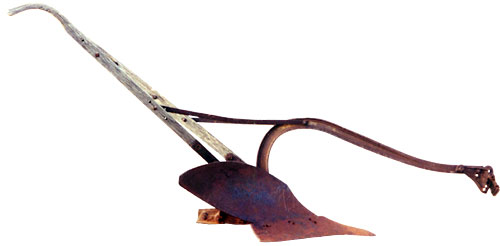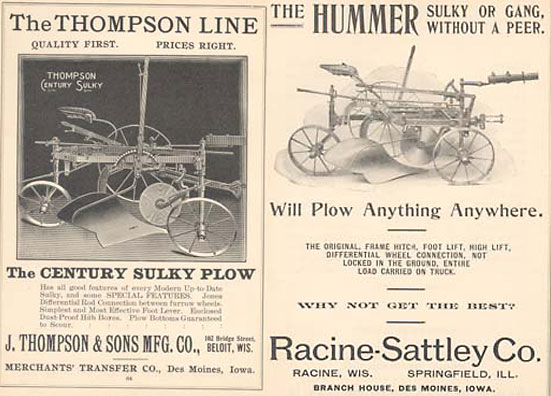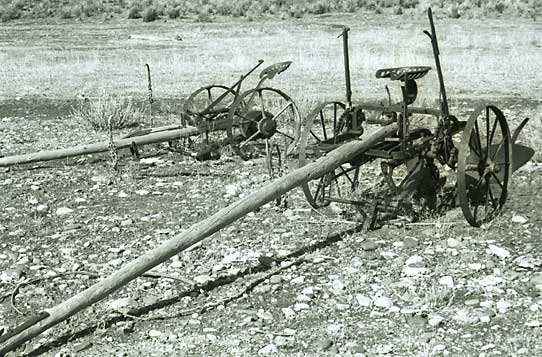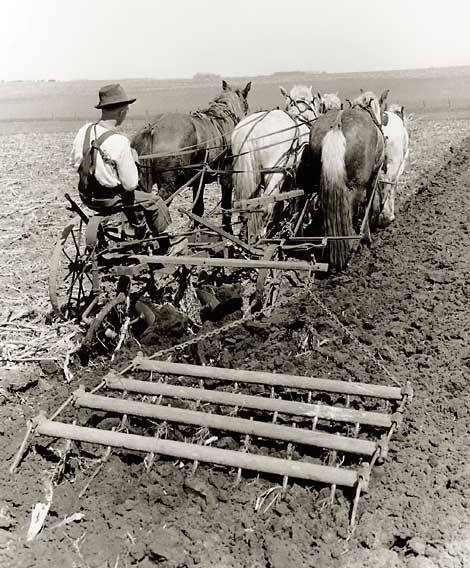 |
||
|
Horses helped to clear new land of brush, trees and rocks, but one of the most fundamental jobs performed by horses was breaking
out the new soil with the plow
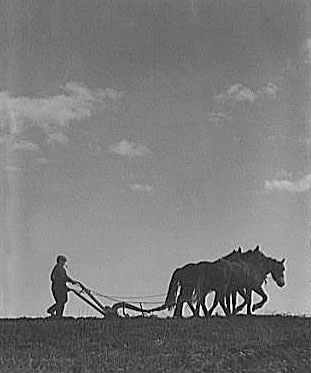 |
|||
|
In the 1850's, when Thomas Morgan and his family members were breaking out new land, the hand plow was commonly used. The
plow operator walked behind the plow and attempted to turn a small amount of soil over as the horse moved ahead. This was
brutal work for horse and man alike.
The first hand plows were made mostly of wood, usually with just a single blade of steel at the bottom to cut the sod. As the technology advanced the wood was replaced with steel. The hand plow in the picture above still had wood handles, but was a fairly late model hand plow.
One of the best things that ever happened to oldtimers who had been plowing with hand plows was the introduction of the "Sulky" plow, which was a generic term applied to the early plows that had wheels and a seat so the operator could ride and the horses could do most of the work. The hand operated plow was particularly difficult to operate because it loaded up with soil, had to be dragged around corners, and required considerable hand-force to keep it in the ground. The plow in the foreground of the picture above has levers on both sides to set the depth that the plow blades would dig into the soil and the weight of the operator kept the plow blade in the ground.
The plow in the picture above is a two bottom plow being pulled by six horses. In addition it has a side arm to pull a harrow to smooth the newly plowed soil. |
|||
